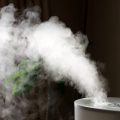Table of Contents
Sinus irrigation or sinus rinse is a way to help cure the allergy symptoms, this is well recommended by many physicians. First-time sinus rinse patients are usually scared with the idea of having salty water in their noses. However, people with sinus problems are accustomed to the sinus rinse. People say that this helps them to relieve their pain, According to the chair of allergy and immunology at Palo Alto Medical Foundation’s Mountain View Center, Dr. Steven Rubinstein “Lots of people use sinus irrigation and feel great…if you can feel better without taking medicine, then why not?” We will help you get to know the sinus rinse using this article. The rinse will help you relieve symptoms that were brought by your allergic rhinitis or your sinusitis.
Sinus Rinse Process
Both year-round and seasonal allergies typically start when an allergic substance or allergen, such as pet dander, pollens, spores or mold, go inside your body using your mouth or your nostrils. More often than not, they go inside using your nostrils. A simple sinus rinsing done at home is running pre-made saline solution or even homemade saltwater into your nasal passages. This technique flushes out the allergens which would help in the reduction of the load inside your system. A great way of sinus rinsing is using warm saline water. This would help relieve the burning sensation inside your nasal passages, this would definitely provide quick relief. Dr. Rubinstein further added that you should not use plain water when you rinse the sinus. Plain water has a different pH than your body, this would just irritate your sinus. “Your first line of defense in dealing with allergies should be rinsing away what has already entered your body,” Dr. Rubinstein says. “If you feel it’s making a difference, then sinus rinsing may be all you need.”
The method of sinus rinsing does not only deal with the expelling of the pollutants and allergens. Aside from this, it also clears out any mucus build up in your sinuses and nostrils. Dr. Rubinstein further said that “You want to get rid of this mucus so it doesn’t stagnate and harbor bacteria.” For this reason, sinus rinsing can also be a big help when you feel a cold coming on. Even if you don’t have allergies, say, if you have frequent sinus infections, rinsing can help keep the mucus flowing out so there is less chance of bacteria overgrowing inside the sinuses.”
Sinus Rinse Regimen
The “neti pot” is a tried-and-tested technique of sinus rinsing. This method has been used by the yogis for many decades. The pots are plastic or ceramic in nature. It holds fluids at the bottom and has a thin and long spout. Some drug stores sell these kinds of pot, however, these can also be easily be bought online.
The following are the steps in making your own saline solution. This is used when your neti pot does not come with a pre-mixed saline solution.
- Mix ½ to 1 teaspoon of sea salt or finely ground kosher.
- Do not put iodized and flavor – infused salts and any with added aluminum or silicone with 16 ounces of either distilled or boiled tap water.
- You can also put ½ teaspoon of baking soda to lessen the sting of the salt.
- Seal and store the solution at the desired room temperature.
When you have used this pot for the first time, you need to know that it will get messy. You can start using this in the shower until you get the hang of it. Or if you want, you can also use a large bowl or hover over the sink to catch any water that will come down from your nose or on your face.
Neti Pot Procedure
- Start only when you are ready. Warm the pre-made solution to normal temperature. Afterward, add it to your neti pot. Tilt your head sideways so your face is horizontal, fully insert the spout on your upper nostril so the water would not leak out of any side.
- When you have inserted it successfully, open your mouth and make sure to breathe deeply when you are gently pouring the half of the solution. Relax when you are doing this, it might feel awkward at first. When you have finished, just wait for another second until the water spouts out of the lower nostril. Some might be drained in your throat, however, do not worry, just make sure to spit to continue doing this task.
- After finishing with the first nostril, slowly stand up and blow your nose very gently to clear it. Bend over again to tilt your head on the opposite direction, repeat the process on the next nostril.
- After finishing the second size, you should do a final blow for your nose. This method is used so there would not be left over the solution in your sinuses. After which, rinse everything out and air-dry your pot so you can use it readily the next time.
You should construct your own sinus rinsing especially during allergy season. There is really no specific guideline on how or when you will use the neti pot, but some prefer to use it on a daily basis. Doctors might suggest to use ith both in the night and morning. Doing this task before allergy season could really help your nasal system.
Some people do not really like the idea of using the neti pot in your sinus rinse. Some doctors say it is okay to just use saline solution sprays at your trusty drugstores. These things work very well. In using saline solution sprays, you need to stand up straight and put the solution in your nostril to remove all the mucus and allergens. The solution is much more easier and convenient to use anywhere at whenever. Physicians would love for you to have a spray ready in your glove compartment or even in your desk drawer so you can use it anytime you want. Do this task privately so you can blow your nose completely and blow it all out.






 I love to write medical education books. My books are written for everyone in an easy to read and understandable style.
I love to write medical education books. My books are written for everyone in an easy to read and understandable style.